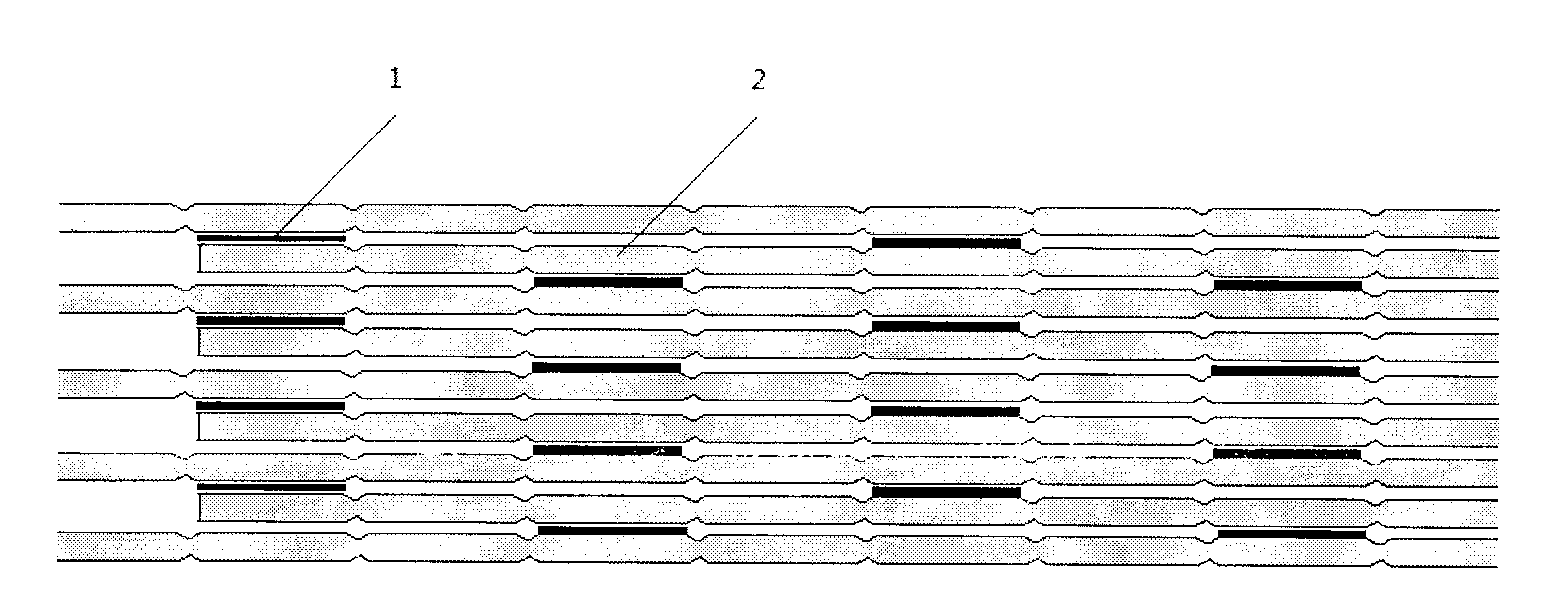Method for producing honeycomb core with textile waste material
A technology of textile waste and honeycomb core, applied in the direction of chemical instruments and methods, lamination auxiliary operations, lamination devices, etc., can solve the problems of low added value, poor quality, severe processing methods, etc., to achieve increased added value and large consumption , a wide range of effects
- Summary
- Abstract
- Description
- Claims
- Application Information
AI Technical Summary
Problems solved by technology
Method used
Image
Examples
Embodiment Construction
[0019] The present invention will be described below in conjunction with specific embodiments.
[0020] This embodiment relates to a specific method for processing a honeycomb core with textile waste, comprising the following process steps:
[0021] (1) Production of reprocessed fiber felt
[0022] Textile waste is mainly made of ordinary clothing scraps and polypropylene waste silk, polypropylene waste silk is the bonding fiber, and ordinary clothing corner waste is the main fiber. The ratio of raw materials (that is, the content of binder fiber and main fiber) directly affects the characteristics of the product, and the content of polypropylene waste silk is 40%-50%. The opening and mixing of textile wastes takes into account the different sizes and lengths of raw materials, especially the characteristics that polypropylene waste silk is not easy to open and wind around cylinders during the tearing process, and polypropylene waste silk and waste spinning fibers are easily m...
PUM
 Login to View More
Login to View More Abstract
Description
Claims
Application Information
 Login to View More
Login to View More - R&D
- Intellectual Property
- Life Sciences
- Materials
- Tech Scout
- Unparalleled Data Quality
- Higher Quality Content
- 60% Fewer Hallucinations
Browse by: Latest US Patents, China's latest patents, Technical Efficacy Thesaurus, Application Domain, Technology Topic, Popular Technical Reports.
© 2025 PatSnap. All rights reserved.Legal|Privacy policy|Modern Slavery Act Transparency Statement|Sitemap|About US| Contact US: help@patsnap.com



